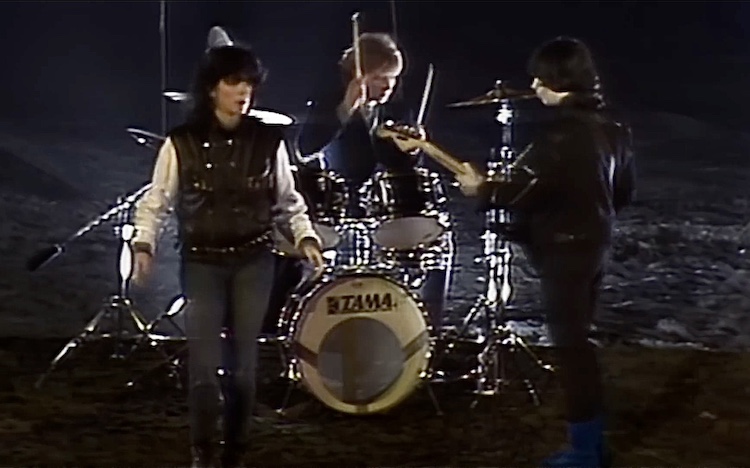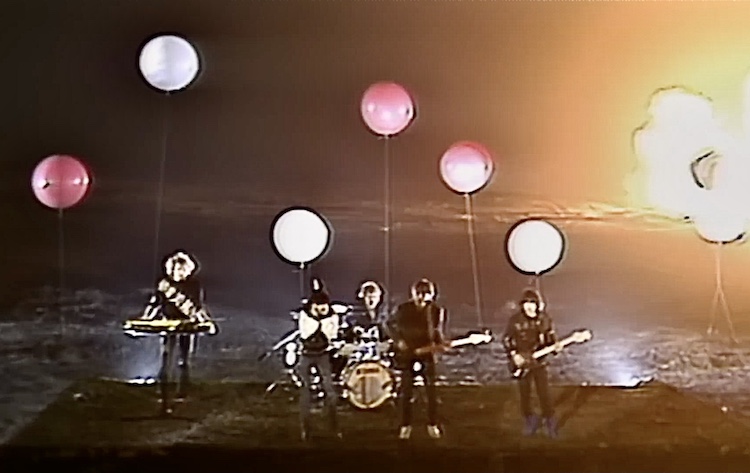The Story Behind Nena’s “99 Luftballons”
In 1983, an unknown rock group from Germany released the classic hit “99 Luftballoons.” The five-member group known as Nena consisted of Uwe Fahrenkrog-Petersen, Rolf Brendel, Jurgen Dehmel, Carlo Karges, and Gabriele Kerner (Nena).
Although not intended for an American release, the song became one of the most successful non-English language songs in US Billboard history. Here’s an inside peek at the story behind Nena’s, “99 Luftballoons.”

The Rolling Stones As Inspiration
The album 99 Luftballoons came as an inspiration to Carlo Karges when he saw balloons being released at a 1982 Rolling Stones concert. Karges noticed that as the balloons moved farther away, into the horizon, they shifted and changed shape. He even went as far as to describe the balloons as “spacecraft,” and refers to them as UFOs in the title track, “99 Luftballoons.”
As he continued to stare, he began to wonder what would happen if the balloons floated all the way across the Berlin Wall into East Berlin. During this time, the Berlin Wall acted as a barrier that physically and ideologically divided Berlin from 1961 to 1989. With a mind filled with inspiration, Karges wrote the lyrics for the song, with Uwe Fahrenkrog Petersen writing the accompanying music.
The Original Song
The original song is sung completely in German, with the title of the song literally translating to “99 Air Balloons.” The lyrics tell a simple story of a military General who mistakes a batch of 99 balloons for UFOs and sends pilots to investigate. Once he finds out that what he thought was a UFO was only balloons, he begins to fire.
The song continues to describe the decisions made by the General who begins to worry the bordering nations which leads to greater conflict with the goal to grab power. Unfortunately, the song ends with a catastrophic war and devastation for all nations involved. The song ends with a powerful line that perfectly describes the sentiment of the people of East and West Berlin: “I think of you and let it go.”

English Mistranslation
When creating the English version of the song, Irish singer-songwriter Kevin McAlea chose to change the lyrics to have it make more sense to English-speaking audiences. McAlea edited the lyrics to be more of an indirect translation, focused on retaining the melody of the original.
In the English version, the main character releases red helium balloons. Upon release, a damaged early warning system registers the balloons as intentional enemy contact. As tension rises, nations turn to panic and then to nuclear warfare. One of the distinct differences between the two versions shows up at the end of the song. Where in the German version, the line reads “99 years of war,” the English instead reads as the “99 dreams I have had.” The change in lyrics failed to portray the devastation faced by the people of East and West Germany.
What The Translation Missed
Nena and other band members were upset at how misconceived the English translation was. Nena wanted to emphasize the devastating effects the war had on their country, and how it was caused by “misunderstandings” between those at odds. The song’s co-writer, Uwe Fahrenkrog Petersen, said in a 1984 interview, “We made a mistake there. I think the song loses something in translation and even sounds silly.”
In a secondary interview, Petersen continues to explain how the translation failed to do the song justice, calling the English version “too blatant.” The band never wanted to be seen as a protest band and McAlea’s translation made it seem as such.

The True Hit
Luckily for the band, American and Australian audiences found the original German version to be a more enjoyable song. Hindered by a mistranslated cover, the German version still reached No. 1 on the Cash Box and No. 2 on the Billboard Hot 100. “99 Luftballoons” is a certified hit and will be remembered the way it was intended.

